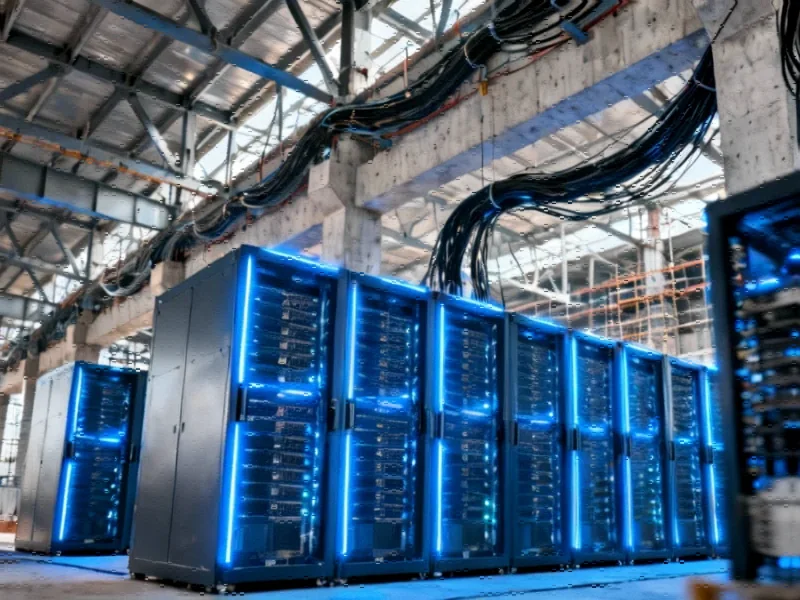Intel Explores New Frontier in Middle East Semiconductor Partnership
In a strategic move that could reshape global semiconductor dynamics, Intel CEO Lip-Bu Tan has engaged in high-level discussions with Saudi Arabia’s Minister of Communications and Information Technology, Abdullah Al-Swaha. The meeting signals Intel’s aggressive pursuit of alternative funding sources and manufacturing partnerships as the company seeks to regain its competitive edge in the increasingly crowded chip manufacturing landscape.
The discussions, confirmed by multiple sources including industry reports, focused on potential collaboration in semiconductor development, advanced computing technologies, and artificial intelligence infrastructure. This aligns with Saudi Arabia’s broader Vision 2030 initiative, which aims to diversify the kingdom’s economy beyond oil dependence.
The Gulf’s Growing Appetite for Technology Investment
Saudi Arabia and neighboring Gulf states have been actively repositioning their economic strategies, moving from traditional energy-based economies toward technology and innovation-driven growth. The kingdom’s Public Investment Fund (PIF) has emerged as one of the world’s most active sovereign wealth funds, with previous technology investments including a $45 billion commitment to SoftBank’s Vision Fund.
This potential partnership represents more than just financial investment—it could provide Intel with strategic advantages in a region that’s rapidly embracing digital transformation. As global energy policies evolve, nations like Saudi Arabia are seeking to establish themselves as technology hubs rather than merely energy exporters.
Intel’s Multi-Front Comeback Strategy
Under Tan’s leadership, Intel has been pursuing an aggressive partnership strategy across multiple fronts. The company has recently secured collaborations with NVIDIA, SoftBank, and maintained engagement with U.S. government initiatives. The potential Saudi partnership represents what industry analysts are calling a “capital front” expansion—seeking investment from non-traditional sources to fund the massive capital expenditures required for advanced semiconductor manufacturing.
The timing is critical for Intel, which faces intense competition from Taiwan Semiconductor Manufacturing Company (TSMC) and Samsung. Building new fabrication facilities requires billions in investment, and managing energy infrastructure demands for such operations presents additional challenges that Gulf nations might help address.
Manufacturing Challenges and Opportunities
While Saudi Arabia lacks extensive semiconductor manufacturing experience, the kingdom possesses several advantages that could complement Intel’s needs. These include:
- Financial resources: Significant sovereign wealth funds capable of funding capital-intensive projects
- Strategic location: Geographic positioning between major markets in Europe, Asia, and Africa
- Energy advantages: Access to affordable energy critical for power-hungry chip fabrication
- Political will: Strong government commitment to technology sector development
The potential partnership follows earlier, unsuccessful attempts by Gulf nations to attract leading chip manufacturers. Qatar had previously approached TSMC about establishing advanced fabrication facilities, but the Taiwanese company declined, citing concerns about supply chain logistics and operational costs.
Broader Industry Implications
This potential collaboration occurs against a backdrop of significant technological transformation across multiple sectors. The semiconductor industry has gained geopolitical significance, with nations increasingly viewing chip manufacturing capability as a matter of national security and economic sovereignty.
For Saudi Arabia, partnering with Intel would represent a major step toward establishing technological credibility beyond financial investment. It would provide hands-on experience in one of the most complex manufacturing processes while accelerating the kingdom’s digital transformation goals.
As both parties evaluate the potential partnership, the semiconductor industry watches closely. A successful Intel-Saudi collaboration could inspire similar partnerships between Western technology companies and Gulf nations, potentially reshaping global supply chains and introducing new competitive dynamics in the critical semiconductor sector.
The outcome of these discussions may well determine whether Gulf capital can indeed power what industry observers are calling “Team Blue’s semiconductor comeback”—and whether Middle Eastern nations can successfully transition from technology consumers to technology producers in the global digital economy.
This article aggregates information from publicly available sources. All trademarks and copyrights belong to their respective owners.
Note: Featured image is for illustrative purposes only and does not represent any specific product, service, or entity mentioned in this article.



